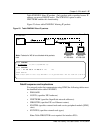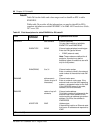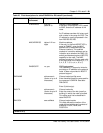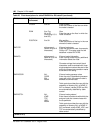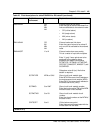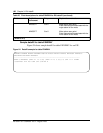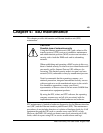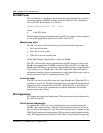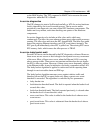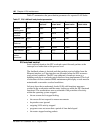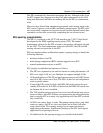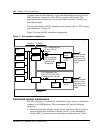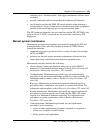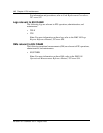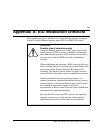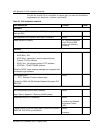
Chapter 4: EIU maintenance 105
DMS-100 Family EIU User Guide TELECOM12
or the MAP display. The TST command in MAPCI also executes the same
diagnostics when the EIU is ManB.
In-service diagnostics
The EIU changes its state to SysB state from InSv or IsTb if a serious hardware
fault is detected by the in-service audit process. The in-service audits
periodically run diagnostics on some critical EIU hardware components. The
audits run every minute, each time checking one quarter of the hardware
components.
In-service diagnostics also include an idler class audit, which runs
continuously. The idler class runs whenever there are no other useful processes
running. The idler class audit tests the EIC shared RAM. The idler class audit
detects the missing Ethernet interface card (EIC) card almost instantly. The
EIU goes SysB immediately when EIC is pulled out. The missing EIC causes
EIC memory fault, which causes the idler process to TRAP.
In-service leaky bucket audit
Several LAN errors can be detected by the EIC diagnostics software. However,
these errors are not severe or fatal enough to be reported on every occurrence
of the error. Most of these errors occur when the Ethernet LAN is carrying
above average traffic. These errors are transient and therefore do not require
the EIU to take any action. However, if these errors occur frequently, relative
to the Ethernet traffic, it may be indicative of a faulty component on the LAN.
The leaky bucket algorithm is applied to such errors before reporting them
through in-service trouble alarm and PM logs.
The leaky bucket algorithm measures errors against relative traffic and
therefore allows the EIU to report faults only when a preset error count
threshold is exceeded. The algorithm is controlled by five parameters:
• leaky bucket size
• fault detection threshold mark. The fault is reported when the bucket level
exceeds this value.
• fault clear threshold mark. The fault reported previously, is cleared when
the bucket level is lower than this value.
• error event factor. This value is added to the bucket level when an error
event occurs.
• good event factor. This value is subtracted from the bucket level when a
good event occurs.



